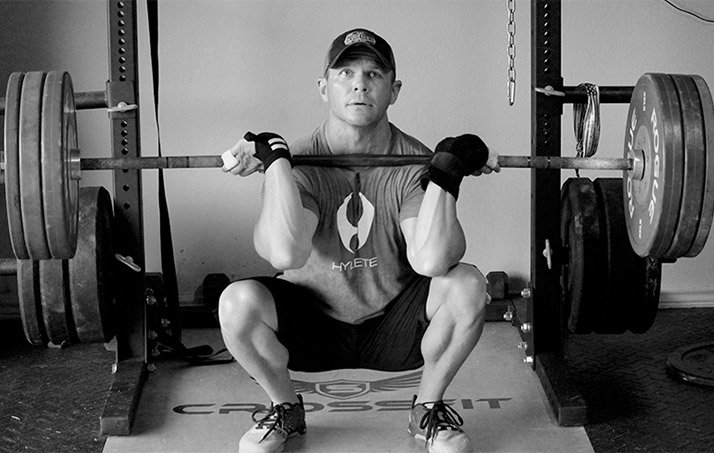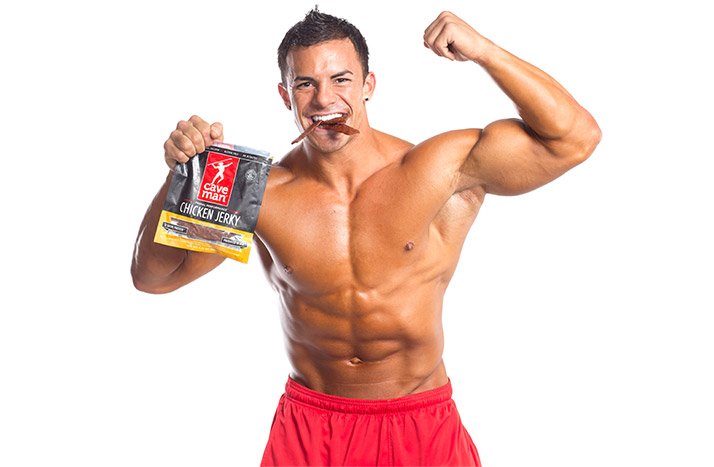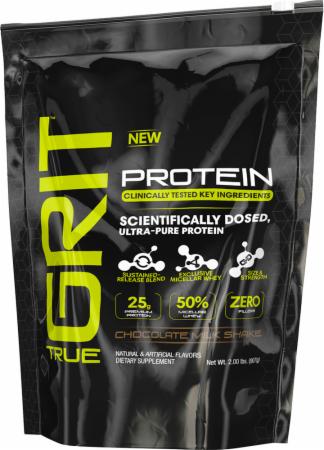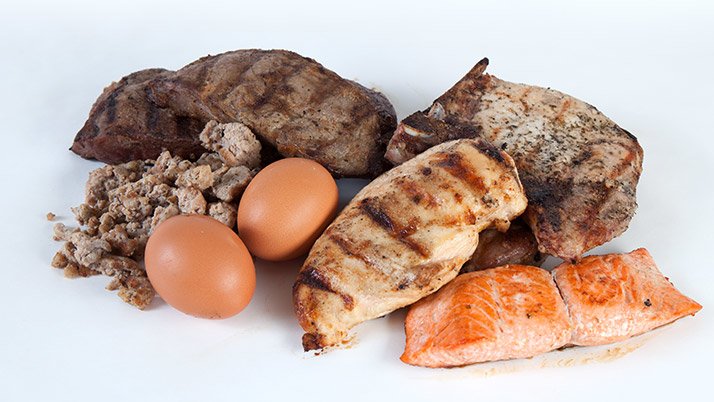The coming of winter means different things to different folks. For some, it's seeing family members and arguing about politics. Others consider the elbow-throwing Black Friday mobs and after-Christmas races to the register to be annual rites. And, of course, there are those who buy a year-long gym membership, only to realize the sofa is far more comfortable than the StairMaster.
But winter means something completely different for lifters: packing on size!

You may have a big target in mind. Thirty-five pounds sure sounds impressive. But like the guy who loads up heaps of food on his plate in the buffet line, only to find his eyes are bigger than his stomach, so too can choosing too high a weight-gain goal have unintended consequences. For you, that means not just putting on a lot of muscle, but adding lots of extra body fat, too!
Your goal with this off-season bulk is to maximize muscle gain while minimizing fat gain, rather than putting on as much total weight as possible. This will require a far more discriminating approach to what you eat and when. Ultimately, however, you won't have to spend those extra weeks burning off the additional layers of body fat. Nor will you be subject to unintended health consequences associated with being, shall we say, a little on the doughy side.
It's called a clean bulk, and True Grit Ambassador Colin Wilborn, PhD, CISSN, associate professor of physical therapy and Director of the Human Performance Lab at the University of Mary Hardin-Baylor (Belton, Texas), helps show you a smarter way to navigate your off-season mission.
Clean Vs. Dirty
While a bulk can loosely be described as a weight-gain phase, today we more commonly delineate between the clean variety and the so-called dirty one, which was a strategy more popular among bodybuilders in decades past. Then, lifters would consume just about anything in the name of adding mass. Nothing was on the list of forbidden foods, including sweets, processed foods, meats loaded with saturated fats, even fast food. As you can imagine, weight swings were ginormous, equaled only by the time it required to diet down into contest shape.

Clean bulks are more popular today because they allow you to look good year-round and don’t require an extensive leaning-out phase. The gains are more measured by comparison, and it requires a much better eye on the foods that are eaten. Clean bulks put more emphasis on natural, unprocessed, and whole foods that contain fiber, including fruits and vegetables; and lean cuts of meat that are low in saturated fat.
By restricting saturated and trans fats, avoiding sugar-sweetened foods, and limiting calorie-loaded sauces and dressings, followers find it more difficult to overeat while better avoiding spikes in insulin, a hormone that makes fat storage all too easy.
Keys To Making Your Clean Bulk Successful
A dirty bulk doesn't require much explanation more than it's essentially a "see-food" diet: You eat any and everything you see. The clean bulk is more work but has greater rewards. Here are four tips to nail it.
1. Give Your Expectations a Reality Check
Surely we want you to think big on a bulk, but temper your enthusiasm with a reality check. "To put on weight, you need to eat a surplus of calories so you can move into a positive nitrogen balance," says Wilborn, who is the author of "Sport and Fitness Nutrition." "The trick is finding a way to do it without blowing up your gut and looking like a pregnant Neanderthal."
To start, Wilborn suggests determining how many calories you need to eat in a day based on your goal of gaining not just mass, but lean mass. That's because, for most folks, you need to be in a daily caloric surplus such that weight gain is between 0.5 and 1.5 pounds each week, which adds up to 2-6 pounds a month. Doing so any faster likely means you'll add significant amounts of body fat, which we are trying to avoid here.
Fortunately there's an easy-to-use calculator to help you estimate your total daily calories, which is based on your age, weight, height, sex, and activity level. The calculations show macronutrient levels as part of a muscle gain. In days past, Wilborn notes, lifters would simply lump an extra 1,000 calories on their daily totals, but this simplistic formula didn't account for individual factors. Using the calculator provides a better estimate.

2. Get Multiple Gut Checks Weekly
While we've given you a starting point for calories, what you're actually eating must match the macros of what you're supposed to be eating. You also need to weigh yourself multiple times each week so you gain weight neither too fast nor too slowly. Remember, the calculator provided an estimate. The only way to know if it's working is to monitor your body weight over time.
It's going to work much better if you track your macros and calories daily—and yeah, that can be a bitch until you learn to better eyeball it. Make the necessary adjustments if your weight gain falls outside the target range. If you're gaining weight too fast, stop the celebration; you'll want to bring your calories down to better ensure those gains are lean. Of course, if you're not moving the scale much at all, increase your caloric consumption. The scale is the only way to know if you're making the right kind of progress.

"Slow and steady wins the race," says Wilborn. "What I mean by this is you should be aiming for gains of about a pound a week. After 12 weeks, that's 12 pounds. Gaining weight any faster means you'll have to eat the wrong kinds of calories."
3. Protein Is Your Most Critical Macro
All macronutrients are important, but too little protein consumption is the one shortfall that will quickly dampen your gains. After all, amino acids are the building blocks of protein tissue, which are necessary for repair and growth.
While the effects of eating too little are fairly obvious, there's less reason for concern when you eat too much. "You need more calories to bulk, and while carbs, fats, and proteins can all be stored as fat in the body, protein has the most difficult path getting there," says Wilborn. That essentially means you'll be expending more calories turning excess protein into body fat than you would if you ate too many carbs or too much fat.

For some, consuming the minimum amount of protein daily in whole-food meals can be a challenge. That's where protein powder can help. For one, protein shakes make great mid-meal snacks. In fact, eating more meals daily elevates muscle-protein synthesis—the process that builds muscle—elevated. Rather than eating only three meals a day, aim to consume about 30 g of protein every 3-4 hours.
Whey protein is considered the gold standard of protein powders, but there's some confusion about the various types. You can make smarter choices by understanding more about whey.
While we're talking supplements, be aware of a couple of others that are smart choices when you're looking to maximize size. Start with this list of the top muscle builders.
4. Lifting More Than Your Shaker Cup
We'd be remiss if we didn't mention that to increase muscle protein synthesis, you'll need to address more than what you eat. You also have to lift, and do so in a way that stimulates the musculature to maximally increase in size. Just as a clean bulk requires a nuanced approach to mass-gain nutrition, so too you'll want to sync up your kitchen and gym efforts.

Creating a one-size-fits-all muscle-building workout is beyond the scope of this article, in part because it depends on your experience levels, strengths and weaknesses, schedule, and proficiency with technique-based multijoint movements. Whatever program you follow, however, it should be based around these five absolutely critical training variables linked to hypertrophy. That'll ensure your training and clean bulk are in optimal alignment.
That's the plan. So let's get to it!

